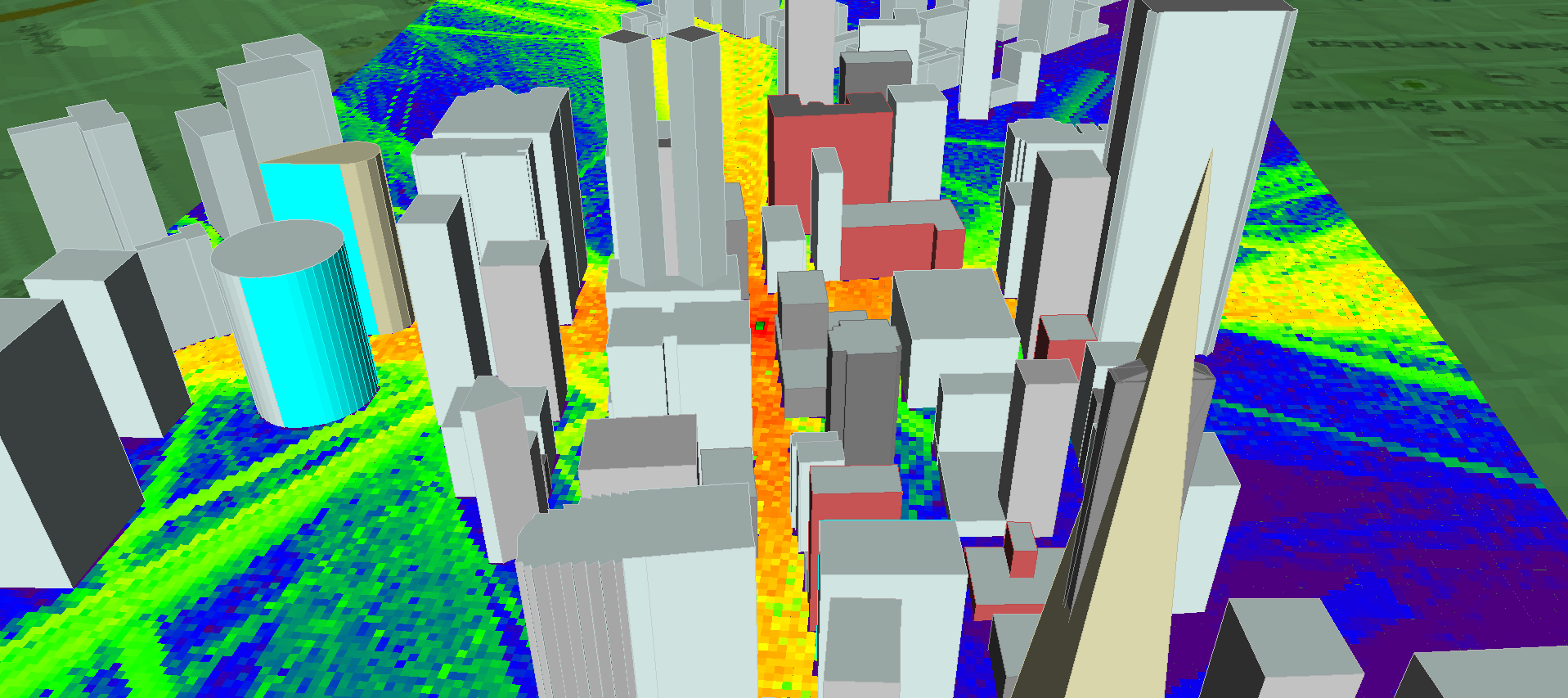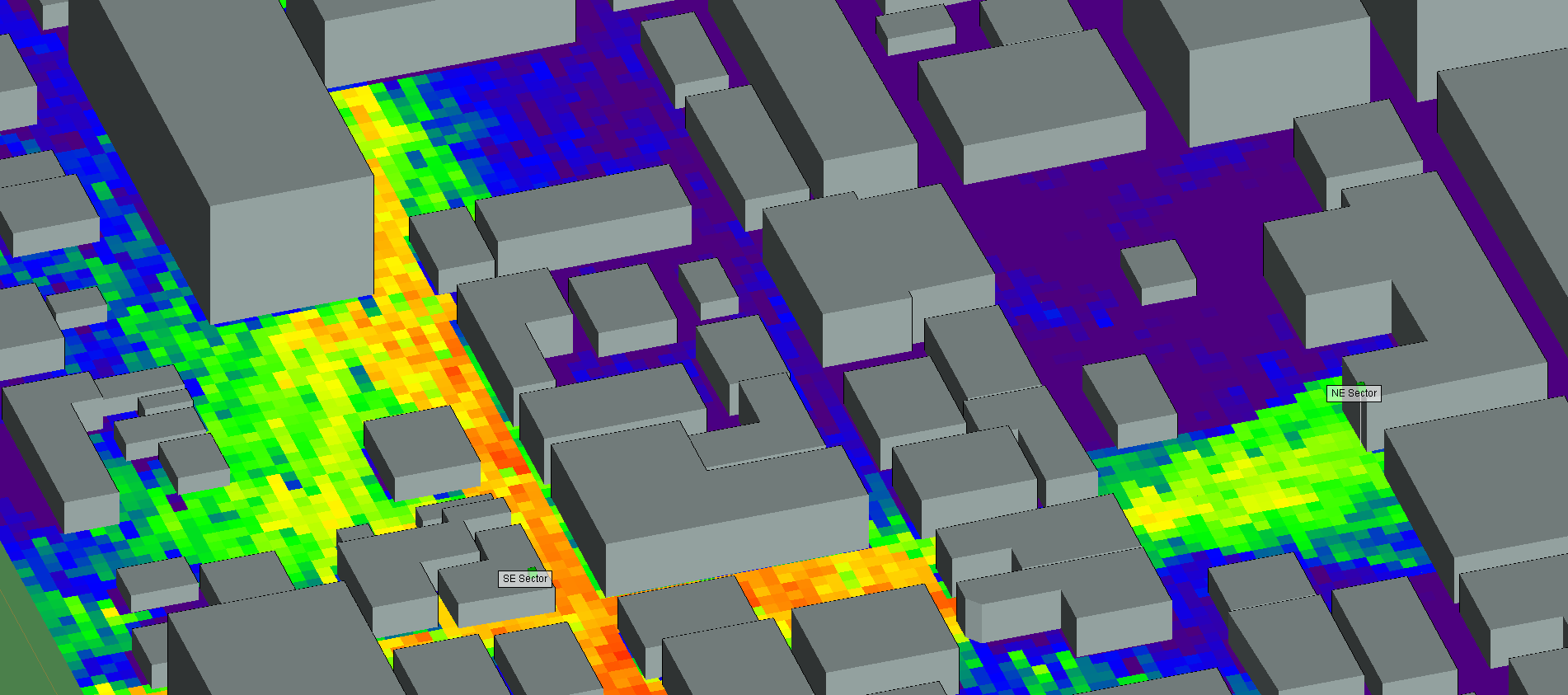- Products & Solutions
- Wireless InSite
- X3D Propagation Model
High Fidelity Ray-Tracing
Analyze reflections, transmissions and diffractions along with frequency dependent atmospheric absorption.

X3D
The X3D ray model was developed by Remcom to provide a highly accurate, full 3D propagation model capable of running on a graphics processing unit (GPU) and using multi-threading for fast runtimes. This model also uses Remcom’s depth-first and exact path algorithms to overcome some of the shortcomings of the traditional shooting and bouncing ray method.
X3D does not have any restrictions on geometry shape or transmitter/receiver height. This accurate model includes reflections, transmissions and diffractions along with frequency dependent atmospheric absorption.
Exact Path Calculations
The shooting and bouncing method requires a collection radius to be constructed around receiver locations to compensate for the discrete ray shooting. Rays that intersect this sphere are considered to reach the receiver. Exact path corrects SBR ray paths so that they end at the exact receiver location. This correction reduces errors in calculated power and phase associated with SBR, but without the longer run times required by methods based on image theory.
MIMO Simulations
The X3D model provides a unique ray-tracing capability for simulating MIMO antennas for 5G, WiFi and other applications. Wireless InSite MIMO simulates the detailed multipath of large numbers of MIMO channels while overcoming the increased level of computations required for traditional ray-tracing methods.
Adjacent Path Generation
X3D’s Adjacent Path Generation capability reduces runtime and memory footprint for scenarios involving large numbers of receivers, or dense receiver sets. This is particularly useful for MIMO simulations. APG limits ray-tracing to a coarsely spaced set of points within a route, grid, or arc receiver set, then uses the interactions among coarse paths to determine exact paths to the dense set of receivers defined by the user.
GPU
Support for acceleration of ray-tracing using NVIDIA's CUDA enabled GPU’s. The X3D model also supports computations on CPUs.
Partitioning
The X3D propagation model supports local partitioning of transmitters and receivers by sets or points. This enables users to run several simultaneous simulations according to the hardware resources available.
Monte Carlo
Wireless InSite’s Parameter Uncertainty capability allows material properties, frequency, and transmitter input power to be defined with a distribution and uses a Monte Carlo approach to assess the impact of input parameter uncertainties on received power and path loss/gain.

Full 3D (Legacy Model)
Remcom’s Full 3D model is a general propagation model that can be applied to urban, indoor, and indoor-outdoor propagation. The model can handle arbitrary geometry and transmitters/receivers at any height. Users have the option of performing the ray-tracing with the shooting and bouncing ray (SBR) method, or Eigenray, which is based on the method of images. The model includes effects from reflections, diffractions, and transmissions.
Save time and reduce costs.
Contact Remcom today for a customized solution to your most complex electromagnetic challenges.
Request a Quote